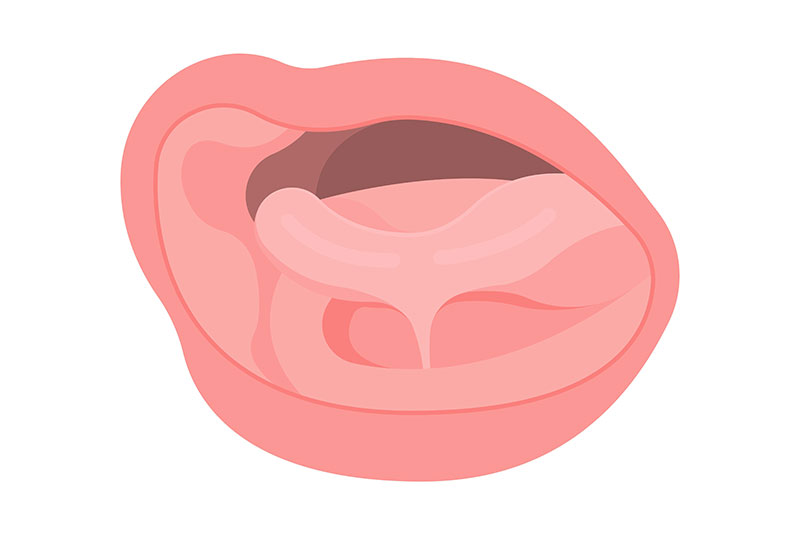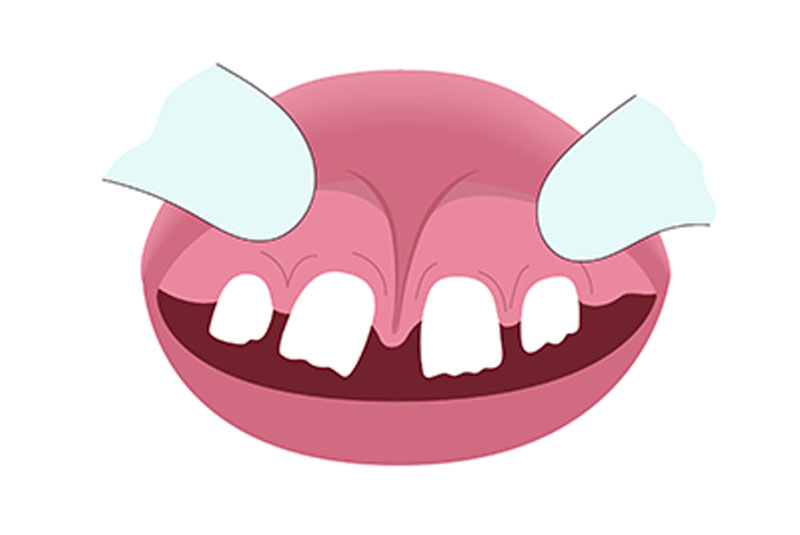Frenectomy - Miami, FL
Sore, Swollen Gums?

Restore Proper Function with
Expert Tongue and Lip Tie Treatments
If your child has been recommended for tongue tie surgery, we understand this can be a stressful situation. At Ambiance Surgical Arts Center, we strive to provide a reassuring and painless experience. With her extensive oral health knowledge, Dr. Jerri Hines is committed to open communication and delivering exceptional care, ensuring comfort and peace of mind throughout treatment.

What Is a Frenulum?
A frenulum is a small, elastic band of tissue found in various body parts, including the mouth. In the oral cavity, it connects the underside of the tongue to the floor of the mouth, helping to control tongue movement and stability.
While typically flexible enough to allow for a wide range of motion, if the frenulum is too short, thick, or tight—such as in cases of tongue tie—it can restrict normal tongue movements, leading to potential issues with speaking, eating, or oral hygiene. In some cases, surgical treatment may be needed to correct these limitations.

How Can Tongue Tie Hinder the Growth and Development of the Jaws?
The tongue plays a crucial role in the growth and development of the mouth by applying pressure to the palate and dental arches. In cases of tongue tie, this pressure is reduced, resulting in a smaller mouth, narrow palate, and underdeveloped dental arches. Tongue tie is often linked to crooked teeth and severe orthodontic issues.
It can also lead to difficulties with breastfeeding, speaking, and eating. Additionally, tongue tie is associated with mouth breathing, teeth clenching, and TMJ problems, as the mouth may not grow to its full potential. A common consequence is a high-vaulted, narrow palate, which can contribute to poor nasal breathing and upper airway resistance issues.


Symptoms of Tongue Tie
- Difficulty breastfeeding or maintaining a latch
- Mouth Breathing
- Teeth Clenching
- Poor Sleep
- Crowded and Crooked Teeth
- Bad Posture
- Inability to stick out the tongue past the lower lip
- Difficulty with certain sounds, such as “s” and “t”
- Problems eating certain foods, such as those that require chewing
- A tongue that appears notched or heart-shaped when sticking out
Types of Tongue Ties

Posterior Tongue Tie
Posterior tongue tie is a condition where the restriction occurs at the back of the tongue, making it less noticeable than a traditional tongue tie but still affecting tongue mobility. It can cause difficulty with breastfeeding, speech, and swallowing, even though the frenulum may appear normal at first glance.
This type of tongue tie can lead to issues with proper tongue posture, contributing to mouth breathing and potential dental problems as the mouth and jaw develop. Treatment typically involves a frenectomy, which releases the restricted tissue and restores normal tongue function.

Anterior Tongue Tie
Anterior tongue tie is a condition where the front part of the tongue is tethered to the floor of the mouth by a short or thick frenulum, limiting its movement. This visible restriction can cause breastfeeding, speech, and eating difficulties, as the tongue cannot move freely.
Children with anterior tongue ties may have trouble lifting or sticking their tongue out, which can impact oral development and lead to dental issues like crooked teeth. A simple surgical procedure called a frenectomy is often recommended to release the tongue and restore proper function.

Lip Tie
A lip tie occurs when the piece of tissue connecting the upper lip to the gums, known as the frenulum, is unusually tight or thick, restricting the lip’s movement. This can cause breastfeeding difficulties in infants, making it harder for them to latch correctly, potentially leading to feeding issues and discomfort.
A lip tie can contribute to speech problems, gaps between the front teeth, and oral hygiene challenges in older children and adults due to difficulty cleaning the area. A simple procedure called a frenectomy can be performed to release the tight frenulum, improving lip mobility and resolving related issues.

